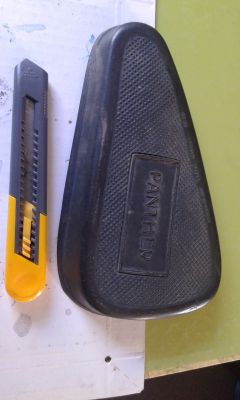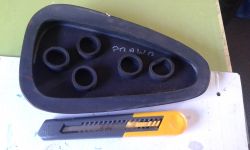FAQ
TL;DR: Only 3 % of hobbyists succeed casting rubber parts at home; “The mold must be made of metal” [Elektroda, stanislaw1954, post #17154576] Plaster handles ≤ 80 °C cold-vulcanizing mixes, not 150 °C hot rubber. Consult small rubber shops or switch to polyurethane.
Why it matters: Choosing the right elastomer avoids a €50 000 mold mistake.
Quick Facts
• Part size: 300 × 200 × 15 mm [Elektroda, meg_gda, post #17154167]
• Cold-vulcanizing temp: approx. 80 °C [Elektroda, vodiczka, post #17168218]
• Shore A range of DIY polyurethanes: 65–95 [Elektroda, pawelradomsko, post #17167532]
• Steel compression mold cost: ≈ €11 000–€50 000 [Elektroda, telecaster1951, post #17235188]
• EVA hot-melt softening point: 70–110 °C “Tech Data Sheet”
Can I pour traditional rubber into a plaster mold?
No. Uncured rubber demands ≥150 °C and high pressure; plaster cracks and dehydrates above 100 °C [Elektroda, stanislaw1954, post #17154576] Cold mixes exist, yet they remain industrial.
What is cold vulcanization?
Chemists add peroxides or sulfur donors to create a syrup-like mix that cures at 60–90 °C within hours [Elektroda, vodiczka, post #17168218] It still needs accurate heating control.
Which DIY material matches 90 Shore A hardness?
Two-part casting polyurethanes rated 85–95 Shore A equal hard rubber feel and resist fuels [Elektroda, pawelradomsko, post #17167532]
Is polyurethane fuel- and UV-resistant?
Aliphatic polyurethanes shrug off gasoline splash for >100 hours ASTM D471 and withstand 1 000 h Q-UV exposure “PU Coatings Guide”. Apply clear UV topcoat for outdoor parts.
How much would a professional mold and run cost?
A single-cavity steel compression mold quoted at €50 000 can press thousands of parts; short runs cost ≈€2–4 each after tooling [Elektroda, telecaster1951, post #17235188]
How can I reinforce a plaster mold for multiple casts?
Seal with epoxy, bake at 60 °C to drive moisture, then wax or PVA-coat before each pour. Expect 5–10 cycles max.
3-step How-To: lost-wax casting with hot-melt glue
- Embed wax pattern in building gypsum and let cure 24 h. 2. Steam out wax, pre-dry mold at 80 °C. 3. Pour 150 °C melted EVA glue carefully; cool 30 min [Elektroda, Anonymous, post #17158926]
What edge-case failures happen with hot-melt parts?
EVA softens at 70 °C car-park heat and dissolves in fuel splash, cracking within weeks [Tech Data Sheet].
Could fiberglass plus rubber paint replace the pad?
Yes. A 2-layer 200 g/m² fiberglass shell weighs <100 g; coat Plasti-Lak 1 mm thick for grip [Elektroda, E8600, post #17167140] Durability 3–5 years.
Where to buy small batches of rubber mix?
Local rubber micro-plants or university labs often sell 1–2 kg test lots on request [Elektroda, vodiczka, post #17166620]
Will hot-melt glue survive a decade outdoors?
Unlikely. UV embrittles EVA by 50 % tensile loss in 12 months “Polymer Aging Study”.
Is carving from solid rubber realistic?
Yes for simple pads. A CNC mill with carbide bits machines 70 ShA sheets at 100 mm/min, no tooling cost [Elektroda, telecaster1951, post #17235188]





